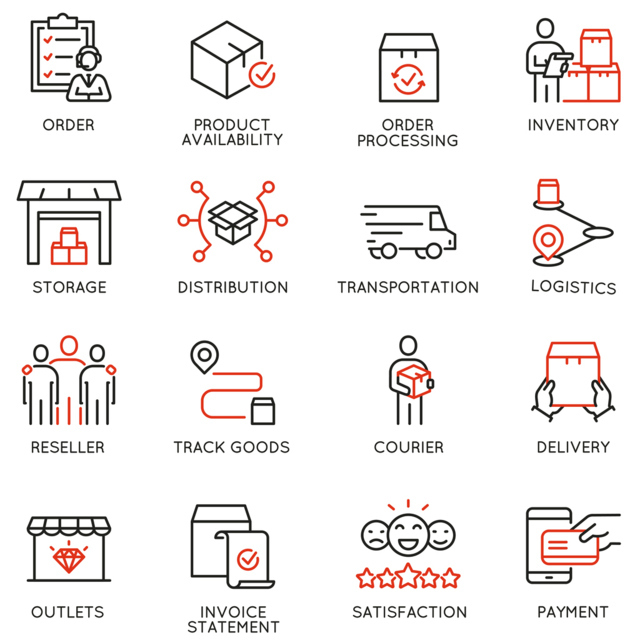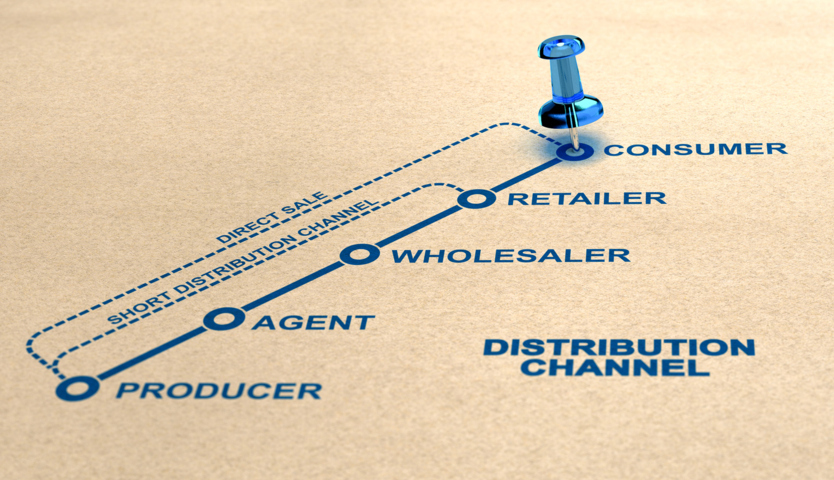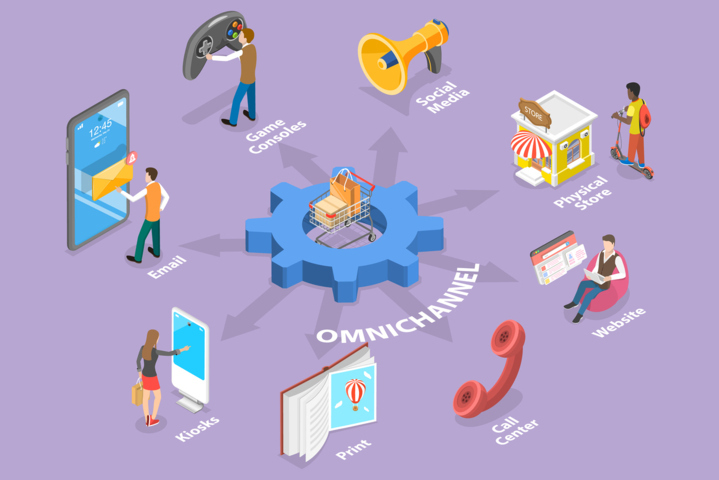Maximize sales potential through a strong sales channel strategy! Explore key elements & best practices for success.
One of the biggest challenges of business owners is scaling up their business. Most companies, at first glance, will tend to address this issue through organic growth. They will try to achieve this by increasing output and enhancing sales internally through the company’s resources. However, salespeople only have so much time. Even hiring the most dedicated people and investing in tools that boost their efficiency, the fact remains that there is only a limited, finite number of selling hours in the day.
Some organizations decide to hire more sales reps but recruiting and employing is an expensive move and cuts away at a company’s margins. The channel sales model offers a viable, innovative opportunity. Utilizing a channel sales strategy to boost sales involves distributing your products via a channel partner that will market and sell the product for you allowing you to reach a wider market.
In this blog, we will focus on the concept of channel sales, including key elements and best practices for your sales organization on your way to adopting a channel sales program
What is Channel Sales?
In a channel sales model, a company sells its products through third-party partners, which include affiliate partners, distributors, value-added providers, independent retailers, dealers, agents, or another entity that doesn’t work with it directly. Utilizing a channel partner sales strategy can boost your revenues, accelerate growth, and let you reach a broader audience. Though it offers many benefits, a channel sales program might not be right for your company.

Common Types of Channel Sales Strategies
Leveraging channel sales program can help your company expand its reach, scale sales operation, and increase revenue. It’s important, however, to understand the different types of sales relationships before starting a partnership.
-
Affiliate Partners
Affiliate marketers sell a company’s products to consumers. They are hired by businesses and offered a commission on sales they make. The affiliate marketer doesn’t spend for the products they sell but is responsible for any marketing costs. The product owner may provide training and materials and special discounts but the affiliate marketer takes care of the costs to promote the product.
-
Distributors
They are intermediaries who purchase products from manufacturers, then sell them to retailers. Distributors, like retailers, buy goods in bulk at a reduced price, then sell the same to retailers at a higher price. Wholesalers that buy a higher volume of goods usually work with distributors.
-
Value-Added Providers
Value-added partners collaborate with product owners to build products or services with added value. They typically bundle a company’s product with their own or another partner’s products. An example of this would be a company selling computer hard drives that partners with an internet service provider.
-
Retailers
This type of channel sales partners buy goods in bulk from a manufacturer at a discounted price, then sell individual products to consumers. Their profit comes from selling goods to consumers at a higher retail price. Since retailers spend to package and store products once they purchase them, the final price also includes these costs.
-
Dealers
Dealers operate similarly to retailers in that they are the last link to the final consumer in the sales chain. They are however often more structured than retailers as they need to have an authorized partnership with the manufacturer to enable them to transfer the warranty rights of the products to the end-consumer.
-
Agents
Agents or outside sales representatives contact distributors or retailers to promote a product and convince them to begin a distributorship or retailers of this particular product. They often work with product manufacturers and get commissions for their sales.
-
Product Vendors
A product vendor is an authorized company representative who sells products to another business. They collaborate with businesses to ensure the product is advertised effectively and often troubleshoot consumer issues.
-
Strategic Partners
A strategic partnership refers to a mutually beneficial relationship between two businesses. An example is a product manufacturer that aligns with an independent business providing maintenance service and can partner together to deliver excellent service to their customers.
Channel Sales vs. Direct Sales
Direct sales and channel sales are two major approaches to selling products or services. The key differences in various aspects between the two are described in the following.
-
Distribution Model
It is the process of getting the product from the manufacturer to the customer. In the direct sales method, the manufacturer of the product sells directly to the customer making them responsible for the entire sales cycle. On the other hand, channel sales require the manufacturer to sell products through a reseller or sales distribution company, which handles the entire sales cycle on the business’s behalf. For many businesses, the distribution of sales helps them achieve peak profits via channel partner sales while leaving them time for other business objectives.
-
Ownership and Control
The company that manufactures the product has full ownership over the goods that they are selling. In a direct sales model, a business sells its products directly to the consumer so they have more control over the marketing of its product. In the case of channel sales, there is a third-party vendor that can make control over the manufacturer’s product more difficult.
-
Relationship with Customers
With direct sales, you have direct access to consumer feedback since you don’t have to deal with multiple parties. Partners in channel sales often handle resourcing customer support and report if any problem occurs.
-
Expertise and Focus
Channel sales partners may not have much knowledge about the product to be able to sell it and render service to the clients. Being the owner of the product, the company has the technical expertise and may have to train a partner.
With a channel sales program, you won’t need to invest heavily in sales and distribution. Finding the right partners to distribute your products will allow the company to focus its attention on other areas of its business like product development, operations, and quality of its goods and services.
-
Sales Control and Pricing
In a channel sales setting, you have less control over the sales process. There’s an intermediary between you and the client. You don’t have as much say over how your channel partner displays or sells its products. In some instances, your organization may not even be part of the sales process, depending on the model. You have little or no ability to influence the outcome of sales making it hard to predict revenues.
Direct sales techniques are more challenging and expensive for new companies introducing a new product or service into the market. These companies have to allocate more resources for sales activities. Channel sales strategies are less costly and risky for companies without an established network of connections to market their product but at the expense of their share of the profits.
Finding the right sales channel or mix of channels for a company often takes time and experimentation. Different markets may dictate using a different approach for the same product or service offering. It’s also likely that some channels will be more or less effective at different stages of the growth of your company. When you’re a smaller business organization you may need the reach of partners. As you evolve and expand your reach, however, you may have the ability to reach your clients directly and optimize your sales and distribution costs.
After understanding the characteristics of direct sales vs. channel sales, which one is better for you? In a lot of situations, companies often use a combination of both direct sales and channel sales strategies, depending on their products, target markets, and business objectives. The choice between the two approaches depends on a few factors including market dynamics, distribution capabilities, customer preferences, and the level of control and scalability desired by the company.
Benefits of Channel Sales Strategy
There are many reasons a business might adopt a channel sale strategy. Below are the major benefits of selling products through sales channels:
-
Increased Market Reach
Selling directly to customers requires a great deal of time, effort, and resources on behalf of the company. Utilizing channel sales, on the other hand, can mean greater market reach and expand your customer base. The focus lies on partners who already work in your target market.
-
Brand Visibility and Recognition
A company can leverage a channel partner’s strong performance within a market. You don’t have to do the work of establishing a brand presence. Their endorsement will automatically make your product seem credible and reliable.

-
Access to Established Distribution Networks
Adopting a channel sales program can increase the speed of your delivery and customer support. Distributors, resellers, or independent retailers with established distribution networks are ideal partners in the faster management of your inventory.
-
Cost Savings and Efficiency
Businesses that employ channel sales strategies can reduce their cost of marketing. Because the channel sales partner is handling the sales process, the company doesn’t have to worry about hiring and training an internal sales force to handle new customer requirements.
-
Scalability and Flexibility
One of the reasons a business might adopt a channel sales strategy is to scale a sales operation. A company that has the production capacity to sell double the amount of products, but does not have a suitable sales department to scale with the increased production may adopt a channel sales strategy. It will outsource the sales to a third-party entity that can market and sell the products without the business requiring additional sales representatives.
-
Geographic Expansion Opportunities
Channel sales allow companies to expand their product and service lines more readily across new geographic boundaries. Channel partners with a market presence outside of the company’s regular market can automatically bring the business to that new geographic location.
Key Elements of a Successful Channel Sales Strategy
There are many different forms of channel partnerships and sales strategies you can pursue. If you want to transform your sales output and be successful in your channel strategy, ensure that these 5 elements of a strategy are satisfied.
-
Clear Objectives and Goals
Like in any marketing or sales activity, you should first know what you want out of your channel sales program. Define measurable targets. Without clear objectives and goals, you’ll have no way of knowing if what you’ve done has been successful.
Your channel sales goals must be aligned with the company’s overall business objectives.
-
Systematic Process of Partner Selection and Relationship Management
Once you have defined your goals, you need to have an idea of your ideal channel partner. Come up with a partner profile. List your criteria for a suitable channel partner on that profile. These criteria could be something like the following:
- A sales process that aligns with yours
- Access to a new market or region
- Size of the sales team
- Annual sales turnover
Candidate companies should then be evaluated against those criteria for final selection.
There should also be strategies for building and maintaining strong partner relationships. Let them know what’s expected of them and how the relationship will work. It should all be on paper so they know exactly who is responsible for what.
-
Effective Communication and Collaboration
Close communication and collaboration are vital to getting the most out of your channel-selling activities. Assigning a dedicated account manager to each partner, if possible, is ideal. Someone should check with them consistently to see how they’re performing and to offer support when needed.
A successful channel program works by providing partner sellers with training and a wealth of resources to support their marketing. Collaborating with them and sharing knowledge through one-to-one support from your marketing experts is most effective.
-
Channel Enablement and Support
Develop a strong partner program that empowers channel sellers as fully as possible. Provide partners with multiple avenues of support in all aspects including promotion, lead generation, and marketing and sales. Supply them with technical knowledge and capabilities through training and upskilling to develop their understanding of the products they’re selling and improve in other areas like customer service.
Channel partners complain about partner programs being too complex. Streamline processes to facilitate partner success.
-
Performance Monitoring and Measurement
Have specific metrics and KPIs and evaluate channel partner performance against them. Conduct regular review meetings where figures are broken down on how they’re doing across metrics such as sales, customer satisfaction, operational costs, and other relevant areas.
Based on the review, summarize data on what they’re doing well, what could be improved, and some practical guidance on how to make improvements happen and optimize channel sales.

Best Practices for Building a Successful Channel Sales Strategy
Following these sales tips and best practices has been known to produce good outcomes toward a successful channel sales strategy.
-
Have a clear channel sales plan.
The first step if you’re going to dive into channel sales is figuring out the purpose of your future sales channels. Create a statement of purpose for your partnerships making sure it aligns with your company’s overall values and goals. You can define a comprehensive strategy and action plan from your statement of purpose. It will be easy to see what kind of partnerships would benefit your business and which business model you should use.
Your objectives and expectations must be communicated to your partners.
-
Offer incentives and motivation.
Design a compelling partner incentive program that will attract partners specifically the type of channel partners you want to have. Once you’ve attracted highly relevant partners, reel them in by focusing on their needs. They’ll be interested in working with you if they’ll also be benefitting.
Aside from allowing them to earn commission on deals, some companies add extra reward systems to their partnership. You might have a tiered system with one tier for basic partners, a higher tier that sells over a specific amount per month, and a third tier for even high-performing partners. Depending on their tier, offer valuable incentives that will motivate them to work harder for the reward.
-
Provide continuous training and enablement.
Enable your partners to sell, reach new clients, or enhance the value of their products by providing product and sales training. Develop excellent resources that they can use to confidently sell your product. Also, make sure you share industry insights and market trends with partners.
-
Conduct regular evaluations and adjustments.
Conduct regular reviews of channel sales performance and offer them ongoing reporting showing results of sales and customer satisfaction, among other metrics. With some in-depth performance analysis, identify areas for improvement and make necessary adjustments.
Popular Brands that Use the Channel Sales Model—and What You Can Learn From Them
Some of the world’s biggest and most successful brands from highly profitable companies utilize channel sales strategies. Here are a few examples.
Procter & Gamble (P&G)
The Procter & Gamble Company (P&G) is an American multinational consumer goods corporation with a vast portfolio of popular brands in various categories including personal/consumer health, personal care, and hygiene products. Its products are organized into different segments including Grooming, Beauty, Health Care, Fabric & Home Care, and Baby, Feminine, & Family Care. P&G uses channel sales extensively. It partners with retailers and distributors worldwide to distribute and sell their products to end consumers. Through their immense distribution network, P&G products are widely available in retail stores globally.
Coca-Cola
The Coca-Cola Company is an American multinational corporation best known as the producer of Coca-Cola. A leading beverage company, it also manufactures, sells, and markets other non-alcoholic beverage concentrates and syrups, and alcoholic beverages including Fanta, Minute Maid, Fresca, Appletiser, etc. Coca-Cola utilizes a channel sales strategy partnering with bottling companies and distributors worldwide. These channel partners play a significant role in the manufacturing, distribution, and selling of Coca-Cola products to retailers and consumers, ensuring the availability of their products across a wide market.
Nike
Nike, Inc. is an American athletic footwear and apparel corporation. The world’s largest supplier of athletic shoes and apparel, it is also a major manufacturer of sports equipment. Nike operates its retail stores and online sales channels. However, it also banks on channel sales through partnerships with various authorized resellers and sports retailers. Nike’s channel partners help the company expand its reach, showcase its products in stores and provide local customer support.
Apple
Apple, Inc. is an American multinational technology company. As the world’s largest technology company by revenue and the world’s biggest company by market capitalization as of March 2023, it is definitely one of the best companies to work for.
Apple leverages channel sales as part of its sales strategy. While it is known for its direct-to-consumer sales through its Apple Retail Stores and online store, it also relies on channel partners to extend its reach and cater to a broader customer base. Apple works with distributors, authorized resellers, and carriers to distribute and sell its products globally. With channel sales, Apple can ensure its products are widely available and accessible to customers worldwide. The combination of direct sales through its Apple Retail Stores and online channels, along with strategic partnerships with channel partners, allows Apple to serve various market segments and reach customers through multiple distribution channels.
Wrapping It Up
Leveraging channel sales can help your company improve its performance, expand its reach, scale sales operation, and accelerate growth. It is important, however, to understand the different forms of channel sales partnerships, whether it is right for your business, and how your company can benefit from them before pursuing a channel sales strategy.
A well-defined channel sales strategy is key to business success. Best practices that have been known to produce good outcomes toward a successful channel sales strategy include having a clear channel sales plan, offering incentives and motivation, providing continuous training and enablement, and conducting regular evaluations and adjustments.
If you are planning to expand your business and leverage channel sales for your brand, hire top sales professionals from Sales Recruiters Chicago. Visit our website to find and connect with suitable candidates, or contact us and let’s discuss how our qualified recruitment experts can help you with your search for top sales talents in Chicago.



Comments are closed.